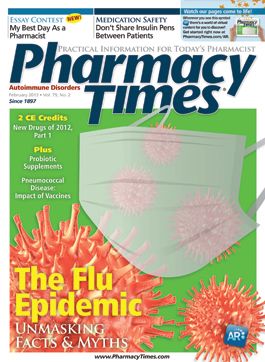Publication
Article
Pharmacy Times
To Increase Use, Address Preconceptions About Generic Drugs
Efforts to increase the use of generic drugs must be multifaceted and address several preconceptions about the products, according to an opinion piece appearing in the January 7, 2013, edition of JAMA Internal Medicine.
The piece is an invited commentary to accompany a study comparing brand-name and generic statin therapy. According to authors Brian K. Alldredge, PharmD, and Steven R. Kayser, PharmD, of the University of California, San Francisco School of Pharmacy, efforts to increase generic use must focus on prescribers and the public.
Generic drugs are particularly susceptible to production shortfalls, the authors note. Shortages fuel an increasing distrust of generic products among consumers.
The barriers expand to prescribers as well, with the authors citing several studies that revealed negative perceptions of generic drugs and preferences for brand-name products for use in their homes. In addition, the authors noted the tendency for brand-name manufacturers to sponsor professional organizations and foundations—one of several areas where generic manufacturers lack the capital to keep pace.
The authors also noted a study appearing in the same issue of JAMA Internal Medicine that determined most physicians receive drug information updates from pharmaceutical company representatives. The educational, marketing, and post-marketing research efforts likely influence physician and prescriber perceptions, although the authors noted that perceptions are difficult to quantify.
Improvement on low-density lipoprotein (LDL) cholesterol goals could contribute to the anti-generics bias, as many physicians gravitate toward brand-name only, high-potency statins, the authors suggest. Several studies showed greater reductions in LDL levels in patients taking the maximum dose of brand-name atorvastatin rather than lower doses of generic pravastatin or simvastatin, which could reinforce the perception of increased efficacy with a brandname product, the authors noted.
The authors believe that process and regulatory revisions are needed to increase confidence in generic products. A portion of the Generic Drug User Fee Amendment requiring generic manufacturers to pay user fees to hasten the review process offsets the cost of more frequent inspections of overseas facilities, which the authors see as a step that would increase confidence in generic products.
The authors noted that bias can be overcome successfully with prescriber education from evidencebased, noncommercial sources; generic drug samples; and generic drug vouchers to promote lower costs.







